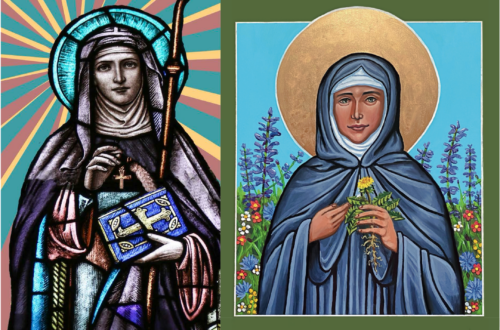A House Divided
 From an ex-radical, Ed Husain, comes a comprehensive overview of Islam and its practitioners— The House of Islam: A Global History—giving us a rich understanding of an “Islam” shaped by conflict, culture, poetry and politics.
From an ex-radical, Ed Husain, comes a comprehensive overview of Islam and its practitioners— The House of Islam: A Global History—giving us a rich understanding of an “Islam” shaped by conflict, culture, poetry and politics.
The beginnings of the book did not sit well with me. Like most writers and experts of Islam, Husain uses the terms “shari’a” and “shari’a law” interchangeably, conflating two very different concepts and missing the opportunity to educate the public about the distinction between the two. As a human-rights defender who utilizes the Qur’an in affirming human rights, I constantly battle with shari’a law (based on Islamic jurisprudence centered around man-made interpretations of shari’a, which is an overall way of life based on the Qur’an and the authentic traditions of the Prophet Muhammad). How can shari’a law be God’s law—as is pervasively believed by Muslims—if it contradicts the Qur’an itself?
This was a disappointing start, but things got better.
Given the current political climate in the US and the violence perpetuated in the name of Islam on a global scale, the chapter titled “Islamist” is one of the many chapters that will beckon you to re-read. The author writes expertly on the Islamists’ theological roots and Muslim Brotherhood founder Hasan al-Banna’s use of the organizing models of Italian fascists and German Nazis, which still permeate many governments today—including that of Malaysia. One point I vehemently disagree with, though, is the author’s exuberant praise for Tunisian Islamist leader Rachid al-Ghannouchi’s evolution from a rabid Islamist, who advocated for violence in defense of Islam in 1991, to his current stance of “pluralism and coexistence . . . free from ideology,” and a proponent of a global Islamist movement that does “not seek to impose its interpretation of Islam in public.”
This is a fallacy. The author gave al-Ghannouchi a pass here, when what he actually said was that “Tunisians of today are not ready for shari’a law, but their children will be.” Ghannouchi’s party Ennahda is still Islamist, utilizing the democratic process to silence the arts and music, and to deprive women of their rights. With a substantial number of seats in parliament, they have positioned themselves against a proposal by the secular president for a bill for equal inheritance for women and men, claiming it goes against “shari’a law.” For the American readers, the author claims that “Christianity and faith generally were not imposed.” Let’s be clear-eyed: Ennahda is very much like the Christian right in the Republican Party, legislating their interpretation of the Bible. They are not benign.
While I take issue with his interpretation of Islamists like Ennahda, Husain’s chapter “Who is a Salafi? Or a Wahhabi?” is very important and worth reading and re-reading, as it differentiates between these movements and ordinary Muslims. However, the author’s claim that only five percent of the Muslim world adheres to these ideologies is low-balling the figure, given how Salafism and Wahhabism has influenced religious institutions and culture globally and the support they receive globally from Saudi Arabia. These movements have indeed influenced mainstream Islam in its rejection of the arts, music and the integration of the sexes as “haram” or forbidden, and its acceptance of an Islam that is supremacist. Go to any mosque, or study the mannerisms of most Islamic educational institutions—including Zaytuna College in Berkeley—and you will see characteristics of both Salafism and Wahhabism. In Malaysia, the national interfaith council lacks a Muslim representative because Islam is considered to be above other religions and therefore does not need to sit at the table. This echoes the same theology as that espoused by the Salafi-Wahhabi mindset—the supremacy of Islam.
My two favorite chapters are the ones on Sufism and Sex.
In “Who is a Sufi?” the author writes on Rumi, the most-read poet in America. He writes of Rumi’s spiritual awakening from one of professional duties as a teacher, one tied to pleasing his constituency, to unshackling himself from sacrosanct behavior, to freeing himself from being liked and respected—he sang, he danced, he was free.
Sufism is the heart of Islam: “everything is permitted unless specifically forbidden.” The poets Hafez, Omar Khayyam, Badakhshi and many more wrote of free-spiritedness, of winning over large segments of the world’s population as illustrated by the many regions of the world populated by Muslims—from Yemen, to Africa, to South Asia with their powerful heritage of poetry and music, to Southeast Asia. It is therefore sad to see Sufism being outlawed, as is happening in Malaysia, and its deep spirituality co-opted by misogyny by the powerful, the destruction of its shrines and the killing of its adherents by the Salafi-Wahhabis. And then, “Sex.” What an eye-opening chapter! It delves from the explicit poetry of human attraction and sex to the divine poetry of love for God. For a teaser (leaving out the explicit part) here is an excerpt of a poem from Rumi, which begins:
A certain man had a jealous wife and a very, very appealing maidservant. The wife was careful not to leave them alone, ever. For six years they were never left in a room together. But then one day at the public bath the wife suddenly remembered that she’d left her washbasin at home. “Please, go get the basin,” she told her maid. The girl jumped to the task, because she knew that she would finally get to be alone with the master. She ran joyfully, she flew . . .”
The last paragraph reads: “People who renounce desires often turn, suddenly, into hypocrites!”
As a Muslim of Southeast Asian heritage, there are many parts of the book that I agreed with, disagreed with, found educational and, at times, made me feel a little short-changed. Unlike many books out there, The House of Islam is written in an easy and engaging style that I found hard to put down, and it is a must read for everyone, regardless of whether one is an expert or just minimally curious about Islam. More importantly, I highly recommend this book for the Muslim youth, who seem to know very little about the history and culture of Islam and, thus, have become puritanical and literal in their belief system. How did such a beautiful religion, centered on love of God, and its culture of poetry of love succumb to radicalism and literalists? How did a religion that was permissible to diversity give way to one that is black and white? The answers are in this book.




